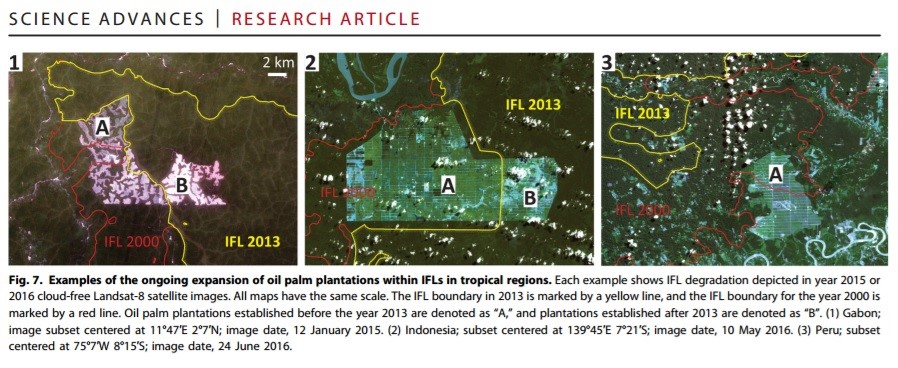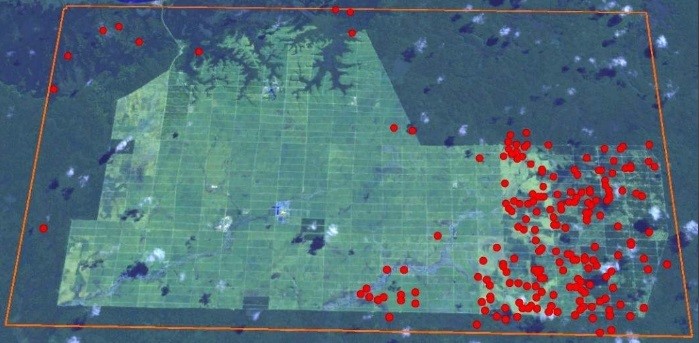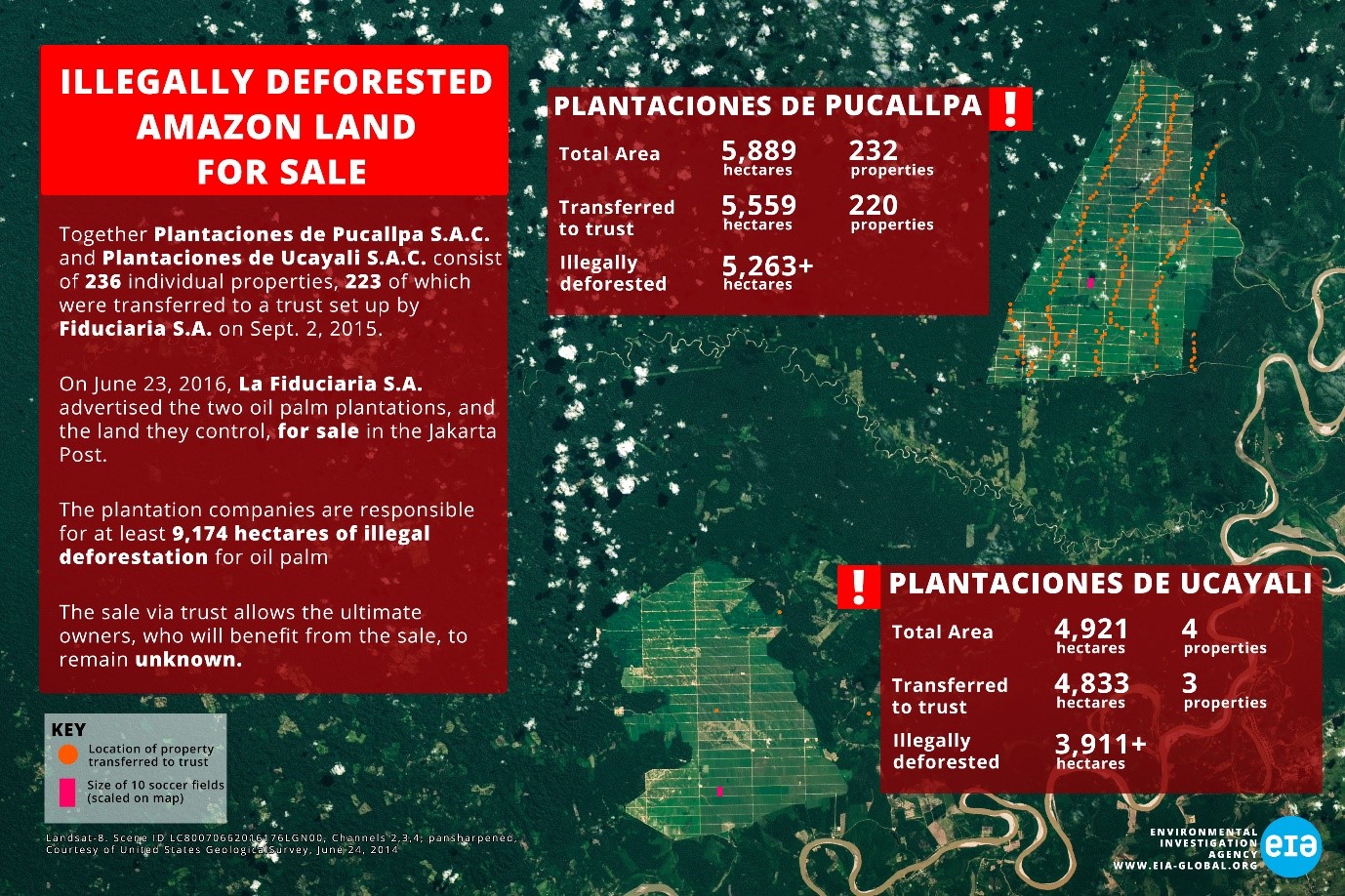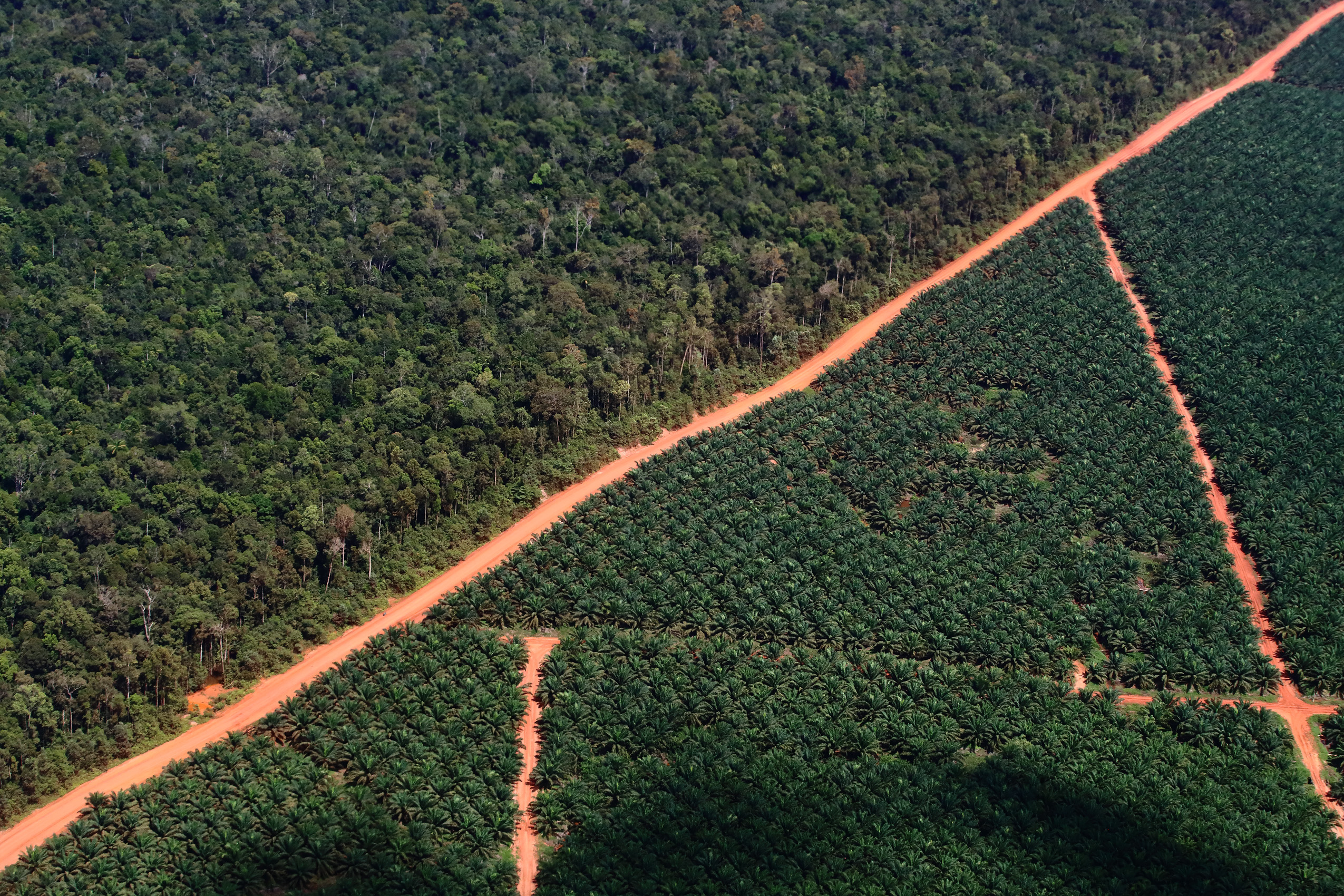A new study has shown how Intact Forest Landscapes – the
‘last frontiers of wilderness’ are declining rapidly
worldwide. More than 7 per cent of the area of these uniquely valuable
‘untouched’ forests were degraded or cleared between 2001 and 2013, and in the
tropics the rate of loss is accelerating. The authors point the finger at
large-scale commercial agricultural expansion as one of the primary causes.
What they neglect to mention is that much of this plantation expansion has been
illegal. Yet an analysis by Earthsight of the three anonymous
illustrated examples they provide shows that two have been exposed as illegal,
while a third appears to be being developed in contravention of company policy.
Page 10 of the study shows
the three examples, which are in Gabon, Indonesia and Peru (see screengrab
below). Though the paper does not name the plantations or their owners, Earthsight
can reveal that all three examples are being developed by large industrial oil
palm and rubber plantation companies with extensive international links.

The three examples of destruction of 'intact forest landscapes' by agricultural plantations given in the study
The example in Gabon is a rubber plantation at Bitam being developed by Singaporean giant Olam, one of the world’s leading agribusiness traders. Global Forest Watch data show that more than 4000 hectares of intact forest landscape were cleared in this concession during 2012-2014. Olam has kept the concession agreement and associated maps and plans secret, making it impossible to assess to what extent the company has complied with the law. However, the available data nevertheless suggest it may be in contravention of its own sustainability policies, which ban the clearance of ‘high conservation value’ (HCV) forests. How an intact forest landscape can be anything other than HCV is difficult to understand. Olam was recently exposed by NGOs for clearing large areas of valuable natural forest for oil palm elsewhere in Gabon.
The example from Indonesia is the oil palm plantation PT Dongin Prabhawa, one of a number of concessions in intact forest landscapes being developed by the Korean-owned logging and plantation firm Korindo in Indonesian Papua, home to the largest area of intact forests remaining in the country. The company’s operations in the area were recently slammed in the media for illegal use of fires to clear forest. During 2013-15, more than 350 fire hotspots were detected inside this concession, and hardly any in the areas outside it. Fires “typically followed a few months after deforestation, making it clear Korindo used fire to clear biomass from the land in preparation for planting” – something which is illegal in Indonesia. The study, conducted by Aidenvironment for US NGO Mighty, concluded that “Korindo’s oil palm practices flout Indonesian law”, with all evidence pointing to “systematic and widespread use of fire by Korindo during land clearing processes”. The study also concluded that Korindo was a large contributor to Indonesia’s forest fire crisis in 2015, one of the worst environmental disasters of that year.
Fire hotspots and plantation development in Korindo's PT Dongin Prabhawa, Papua, Indonesia
The third example illustrated is the oil palm concession
Plantaciones de Ucayali in Peru. A 2016 investigation by the Environmental
Investigation Agency found that at least 79 per cent of this plantation
was illegally
deforested. There are ongoing legal proceedings being brought by the
Peruvian government against this firm and its sister company, for “environmental
crimes and obstruction of justice, related to unauthorized deforestation of
at least 9,174 hectares of rainforest.” Plantaciones de Ucayali had
already been issued a stop-order for illegally deforesting at least 3,911
hectares of rainforest without the required environmental approvals in 2014, in
addition to being sanctioned with a fine for violating the Peruvian Forest and
Wildlife Law.
The implications of these examples are clear. If the
destruction of Intact Forest Landscapes by commercial agribusiness is to be
stopped, a good place to start would be to tackle the many such projects which
are illegal.




